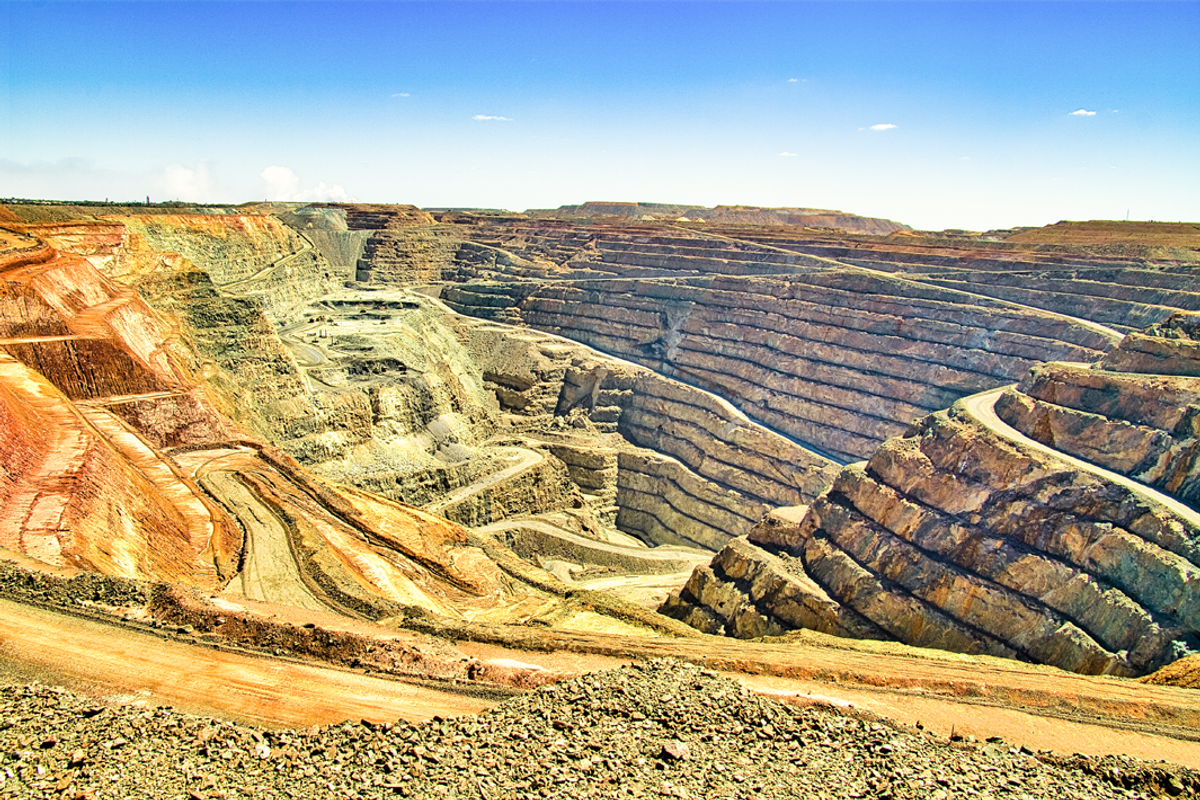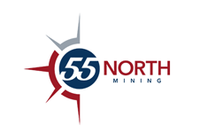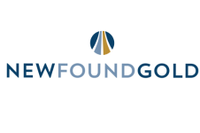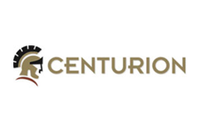Hidden Gem: How Intrusion-related Gold Deposits Could Fuel Next-generation Discoveries

Intrusion-related gold systems are ideal for large-scale, open-pit mining, highlighting their compelling economic attractiveness.
With the gold price continuing to hover near all-time highs and major producers scouring the globe for new large-scale deposits, one type of gold system is emerging as a potential game changer.
Intrusion-related gold systems (IRGS) have already yielded multimillion-ounce mines, like Kinross Gold's (TSX:K,NYSE:KGC) Fort Knox in Alaska, and sparked billion-dollar acquisitions, such as Northern Star Resources' (ASX:NST) AU$5 billion purchase of De Grey Mining in Australia. Even so, these deposits remain largely under the radar for most investors, and their full investment potential is only beginning to be understood.
Traditional high-grade vein systems often require deep, high-cost underground mining. IRGS deposits, however, form broad, consistent zones of mineralisation that lend themselves to large-scale, open-pit development. These geological systems are particularly attractive in today’s market as they offer scale, longevity and a clear path to resource growth, which are critical at a time when new gold discoveries are becoming increasingly rare.
Given their geological and economic advantages, IRGS deposits are gaining attention from the world’s most experienced geologists and savvy resource investors.
Geology and controversy
IRGS forms when granitic magma intrudes into older country rock, generating heat and pressure that cause metal-rich hydrothermal fluids to migrate outward. As these fluids cool, they deposit gold — often accompanied by bismuth, tellurium and tungsten — within both the intrusion and surrounding host rocks. Unlike traditional high-grade vein systems, IRGS deposits typically develop broad zones of mineralisation that can extend for hundreds of meters in width, with gold distributed in disseminated sulphides and sheeted quartz veins rather than concentrated in narrow lodes.
Though often lower in grade, generally ranging from 0.5 to 2 grams per ton, their scale and uniformity make them ideal for large-scale, open-pit mining. IRGS deposits also tend to occur in clusters along regional fault corridors that span tens of kilometers, allowing for the possibility of multiple mineralised centers within a single district. This combination of features offers the potential for long mine lives and relatively low development risk.
As a new yet economically relevant type of deposit system, IRGS remains a topic of debate within the geological community. Some researchers question whether IRGS represents a truly distinct deposit class or simply a variant of orogenic or porphyry systems, shaped by local geological conditions.
The lack of universally agreed-upon diagnostic features, such as consistent fluid chemistry or mineral zoning, can make them difficult to distinguish in the field. Unlike epithermal systems, for example, IRGS typically lack high-sulphidation alteration and strong vertical metal zoning, adding complexity to exploration.
While this ambiguity can be challenging for geologists, it also highlights the opportunity: exploration companies that can correctly interpret these systems using modern geophysics, structural models and geochemical tools may uncover valuable deposits that others have overlooked or misclassified.
As academic consensus continues to evolve, the practical investment question centers on results. And recent activities in the M&A space and among major gold producers point to a compelling opportunity.
Economies of scale
The market is beginning to reward companies with exposure to IRGS geology.
Fort Knox, an IRGS-style deposit in Alaska, has produced more than 8 million ounces of gold since opening in 1996 and still has more than 4 million ounces in reserves.
More recently, the Hemi discovery in Western Australia, previously owned by De Grey Mining, exemplified the growing investor appetite for IRGS-scale projects. The 8.5 million ounce discovery attracted a AU$5 billion takeover bid by Northern Star Resources in 2024, and the transaction was completed in May 2025. Hemi's low-strip, open-pit profile and exceptional size put it at the top of many watchlists, validating the IRGS model as a legitimate path to tier-one status.
Unlike epithermal or orogenic systems, where new discoveries often hinge on chasing high-grade shoots at depth, IRGS exploration favors methodical, district-scale work. The size of the prize is significant, but realising value requires a clear geological model, long-term commitment and the capital to drill systematically across wide zones.
For investors, this translates to a unique set of signals when assessing junior companies: control of a large fault corridor, early stage ounces that can grow, geophysics-driven targeting and a leadership team with IRGS-specific experience. The good news is that many such systems remain underexplored or misclassified, particularly in Proterozoic terrains across Australia and North America.
Alice River gold project: An emerging IRGS opportunity
One company that exemplifies the early mover advantage in an emerging IRGS district is Pacgold (ASX:PGO), an Australian junior that holds 377 square kilometers of granted tenure in far north Queensland, anchored by the Alice River fault zone. Pacgold controls more than 30 kilometers of strike along this corridor, which has seen historical small-scale mining, but virtually no systematic modern exploration, until recently.
Pacgold released its maiden resource in May 2025: 26.8 million tons grading 1 gram per metric ton gold for 854,000 ounces across three zones: central, southern and northern. These zones represent only about 5 percent of the project’s total strike length, however, highlighting substantial room for expansion. Importantly, the resource includes broad, consistent zones of gold mineralisation starting at surface, an ideal profile for potential open-pit development.
The company has completed an aggressive exploration program, and numerous targets have been identified to follow up in 2026.
These targets share key IRGS characteristics: elevated gold-in-soil values; coincident magnetic and radiometric anomalies; and structural settings proximal to known intrusions.
Pacgold’s exploration model draws direct inspiration from the Hemi discovery, where intrusive bodies hosting disseminated gold were revealed through a similar approach. The company’s management and technical teams believe Alice River may represent the next large-scale IRGS discovery in Australia, and early exploration results support this.
Pacgold offers investors asymmetric exposure to a potentially transformative discovery. Its board includes veterans of Australia’s most successful gold discoveries, including Tropicana, Julimar and Coyote. This depth of experience gives the company a strong strategic and technical footing as it advances toward a multimillion-ounce resource.
Investor takeaway
IRGS represents one of the most compelling yet overlooked exploration frontiers in the gold exploration space.
Their ability to host long-life, bulk-tonnage deposits with relatively low technical risk makes them attractive not just to juniors, but also to major producers hunting for future development pipelines. Few juniors are positioned in proven IRGS corridors, and even fewer have the tenure, team and technical discipline to deliver meaningful discoveries — and those that possess this ideal combination present a window of opportunity for investors.
As with any early stage investment, the risks are real. But so is the upside. In this global search for the next big gold camp, IRGS discoveries may well be where the future begins.
This INNspired article is sponsored by Pacgold (ASX:PGO). This INNspired article provides information which was sourced by the Investing News Network (INN) and approved by Pacgold in order to help investors learn more about the company. Pacgold is a client of INN. The company’s campaign fees pay for INN to create and update this INNspired article.
This INNspired article was written according to INN editorial standards to educate investors.
INN does not provide investment advice and the information on this profile should not be considered a recommendation to buy or sell any security. INN does not endorse or recommend the business, products, services or securities of any company profiled.
The information contained here is for information purposes only and is not to be construed as an offer or solicitation for the sale or purchase of securities. Readers should conduct their own research for all information publicly available concerning the company. Prior to making any investment decision, it is recommended that readers consult directly with Pacgold and seek advice from a qualified investment advisor.





